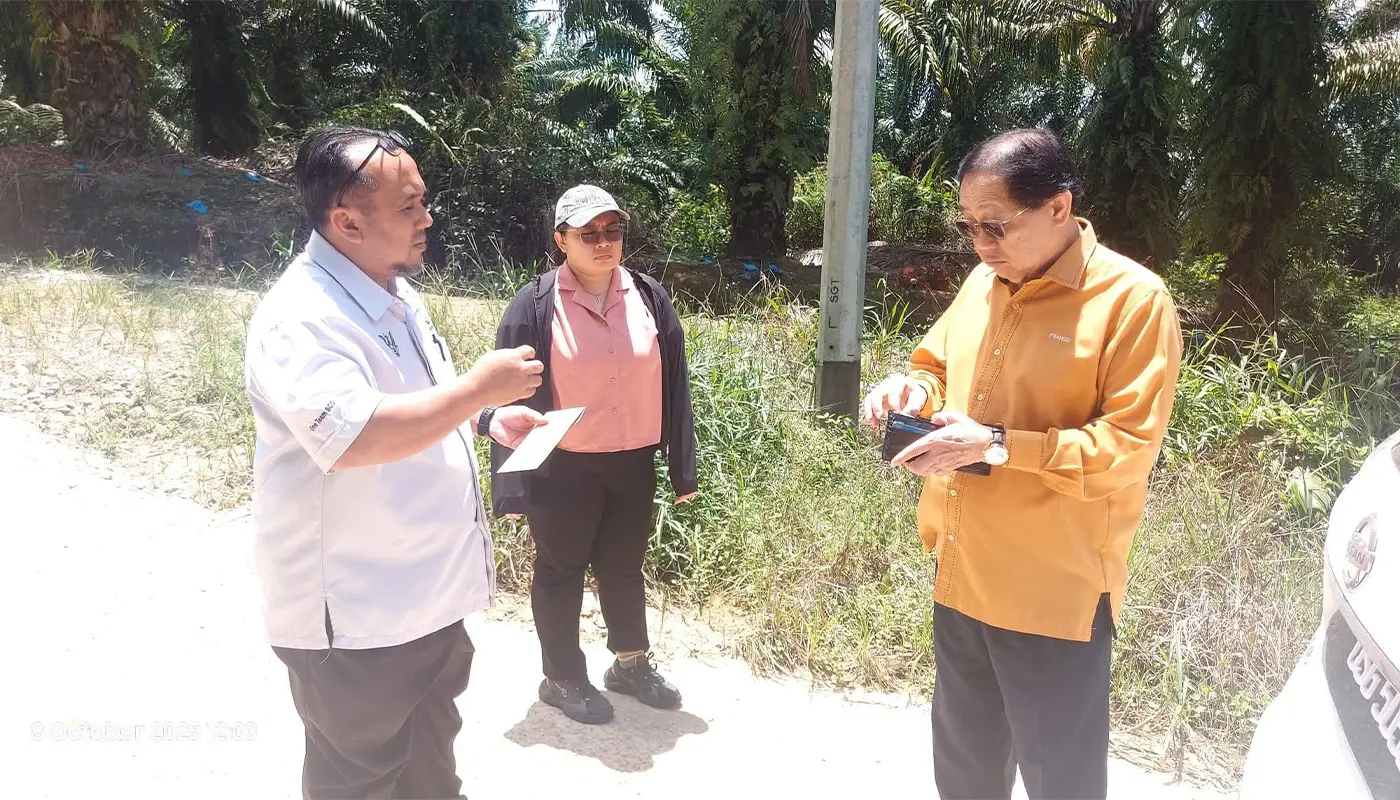SIMANGGANG – The recently merged project management bodies in the Simanggang area are being urged to maintain vigilant oversight of ongoing rural development undertakings, according to remarks by the Sarawak Deputy Minister of Education, Innovation and Skills Development, Datuk Francis Harden Hollis.
Speaking during a working visit to the Sri Aman Public Works Department (JKR) on Wednesday, he underlined that continuous monitoring is crucial to ensure that works uphold their quality standards and are delivered on schedule.
During his visit, the Simanggang assemblyman received briefings on the status of various Rural Transformation Programme (RTP) initiatives in the region. In the evening, he and JKR Sri Aman officials toured several project sites: the road and bridge reconstruction works at Kampung Munggu Ruan, the recently completed road rehabilitation in Kampung Sungai Reboh, and the drainage construction extending from Kampung Sungai Reboh toward Kampung Paku Ili.
He also evaluated proposed and ongoing works along Jalan Katek, roads linking Kampung Kaong, Kampung Radau, Kampung Samak, and plans to pave the route to Kampung Samak. Additionally, he inspected the site earmarked for the reconstruction of the Rumah Fener Community Hall in Kampung Sengelau.
Harden’s call for diligence aligns with his prior admonitions that all approved RTP projects must proceed without delay to avoid backlogs and ensure communities fully benefit from infrastructure development.†
His message also connects to broader state efforts: between 2015 and 2025, the Sarawak government approved 7,328 RTP projects, of which around 5,588 (76 %) have been completed. The total allocation for those projects approached RM1.288 billion, with RM107.67 million earmarked for 738 new RTP projects in 2025.
As infrastructure development in rural Sarawak intensifies, the effectiveness of implementation will likely hinge on sustained supervision by these merged agencies, a responsibility emphasised repeatedly by state officials.





